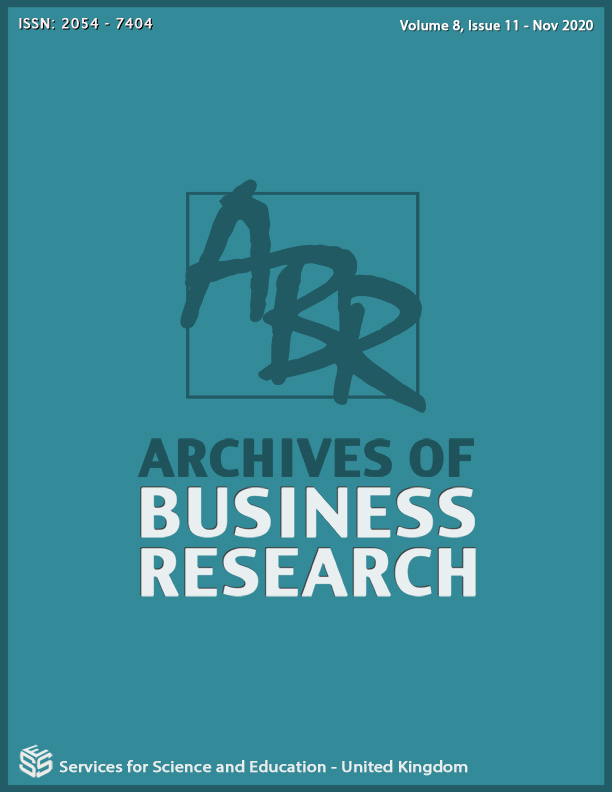PREDICTORS THAT LEADS TO SOCIO ECONOMIC SUCCESS OF LOCAL COMMUNITIES
DOI:
https://doi.org/10.14738/abr.811.9271Keywords:
Socio-economy, Rural Development, Urbanization, Empowering, Interventions, Knowledge Management, ViabilityAbstract
In Malaysia, the infusion of private and public sectors has attributed to the nation’s socio-economic development as strengthen by the need to address the demands and challenges of the local community. These efforts will more likely provide several important ideas that would suffice related and relevant literatures, which will be used to develop a better socio-economic growth in Malaysia. In an economic sense, development entails the transformation of simple subsistence economies into complex monetary economies. In the process, an increase in the proportion of products that are sold or exchanged and a decline in the proportion of consumption may take place concurrently. The purpose of this study is to examine the socio-economic demands and gaps of the local population and to suggest assistance and interventions required. The overall results of this study reveal the challenges faced at the community level in the District of Kuala Lipis in the context of social and economy. This study was carried out via a structured survey throughout the district involving 300 respondents and also complemented with a face-to-face interview carried out with key stakeholders. The study findings were also supported with secondary data compilation of journals, articles and speeches.
References
(5th Ed). Ft. Worth: Holt, Rinehart and Winston, Inc. Belmont CA: Wadsworth.
Bartlett, J. E., Kotrlik, J. W., & Higgins, C. (2001). Organizational research: Determining appropriate sample size for survey research. Information Technology, Learning, and Performance Journal, 19(1), 43-50.
Berk, L. E. (1994). Child Development, Boston: Allyn and Bacon Publishing.
Chirico S., Findlay J., Haywood N., McCutcheon G., Rai R., Scott M. & Wells M. (1998). Sustainable Community Development Guidelines. Bedfordshire Health Authority.
Cohen, J. (1988). Statistical power analysis for the behavioral sciences (2nd Ed.).
Hillsdale, NJ: Lawrence Earlbaum.
Creswell J. W. & Plano Clerk V. L. (2011). Designing and Conducting Mixed Methods Research. Sage Publications.
Dua, S., Sahni S., & Goyal D. P. (2011). Information Intelligence, Systems, Technology and Management. 5th International Conference ICISTM Conference Proceedings.
Fitzgerald, L. F., Gelfrand, M. J., & Drasgow, F. (1995). Measuring sexual
harassment: Theoretical and psyometric advances. Basic and Applied Social Psychology, 17 (4), 425-445.
Kenny & El (2016). The Socio Economy Gap Analysis of Local Communities in the District Bentong. International Journal of Academic Research in Economics and Management Research, 5 (3)
Krejcie, R. V., & Morgan, D. W. (1970). Determining sample size for research activities. Educational and Psychological Measurement, (30), 607-610.
Mazzeo, S. E., Bergman M. E., Buchanan N. T., Drasgow F., & Fitzgerald L. F. (2001). Situation-Specific Assessment of Sexual Harassment. Journal of Vocational Behavior, 59(1), 120-131
Ministry of Culture, Arts and Tourism. (2011). Homestay Statistics 2011.
Morgan, D. L., & Kreuger, R. A. (1993) ‘When to use focus groups and why’ in Morgan D.L. (Eds.) Successful Focus Groups. London: Sage.
Mulligan, J. (2013). “Hotspot Watersheds—Identifying Opportunity” in Natural Infrastructure: Investing in Forested Landscapes for Source Water Protection. T. Gartner, J. Mulligan, R. Schmidt, and J. Gunn, eds. World Resources Institute.
Peterson, M. (2004). Homestay in Malaysia. Transition Abroad Magazine. Nov/Dec, 28 (3) 56-57.
Pittenger, D. (2003). Behavioral Research: Design and Analysis. McGraw-Hill Higher Education.
Rea, L.M., & Parker, R.A. (1992). Designing and Conducting Survey Research: A Comprehensive Guide. San Francisco: Jossey-Bass Publishers.
Ryu, S., Ho, S. H., & Han, I. (2003). Knowledge sharing behavior of physicians in hospitals, Journal of Expert systems with application, Vol. 25, No.1, pp. 113-122.
Sabitha, M (1999). Persepsi Terhadap Gangguan Seksual di Tempat Kerja di kalangan
Pentadbir di Sektor Awam. Seminar Penyelidakan UUM ke 5, Pusat
Penyelidakan dan Perundangan, 28-30 September.
Sabitha, M. (2005) Kaedah Penyelidikan Sains Sosial. Petaling Jaya: Prentice Hall.
Sekaran, U. (2003). Research Methods for Business: A Skill Building Approach (4th Ed). Singapore: John Wiley & Sons, Inc.
Siddiquee, N. A. (2007). Public service innovations policy transfer and governance in the Asia-Pacific region: The. Malaysian experience, JOAAG, Vol. 2. No. 1.
Strong, B., DeVault, C., Sayad, B.W., & Cohen, R. F. (2010). The marriage and family experience (8th Ed). Belmont, CA: Wadsworth/Thompson Learning
Suppiah V., Sandhu M. S., (2011) "Organisational culture's influence on tacit knowledge‐sharing behaviour", Journal of Knowledge Management, Vol. 15 Iss: 3, pp.462 – 477.
Wiersma, W. (2000). Research Methods in Education: An Introduction. Boston: Allyn and Bacon.






